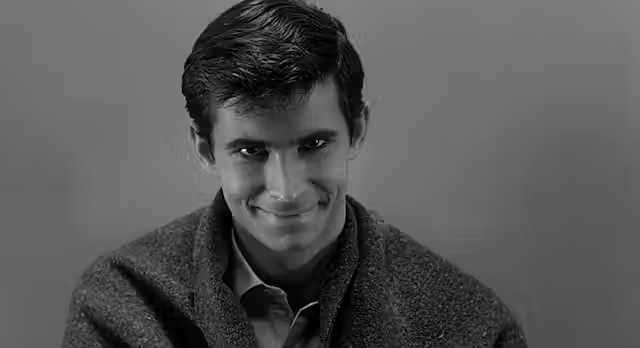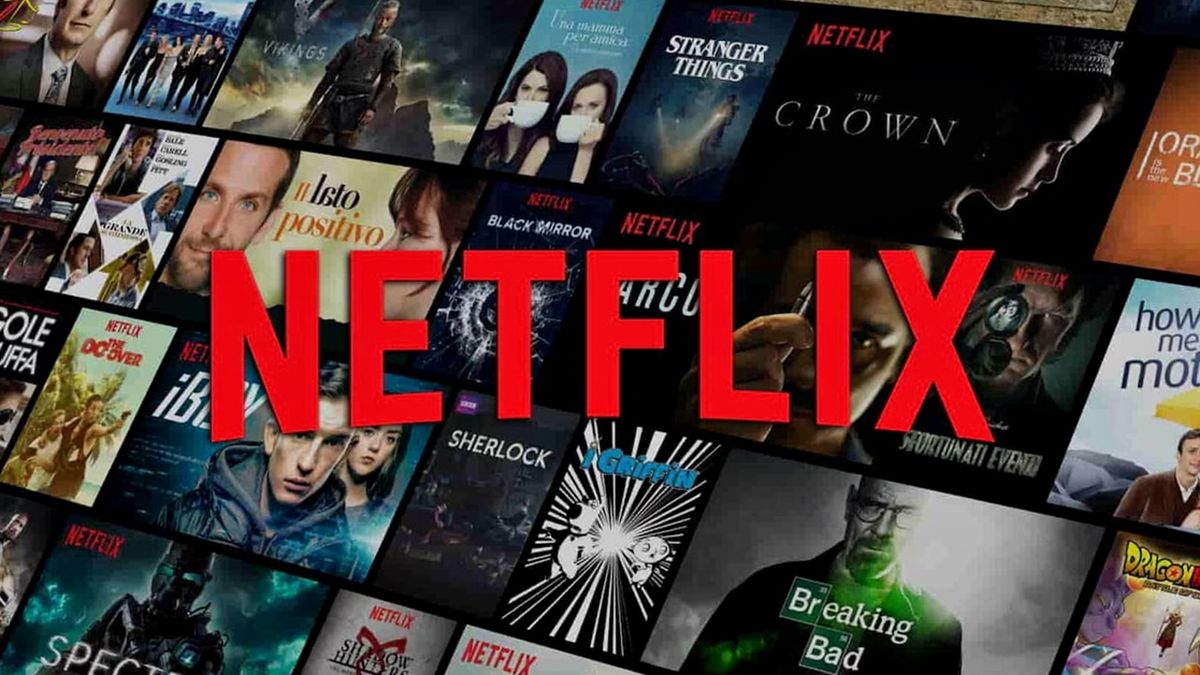- 20 Days in Mariupol
Documentary | 95 minutes | 2023
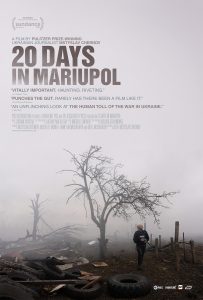
20 Days in Mariupol chronicles the harrowing first three weeks of Russia’s invasion of Ukraine, leaving a lasting impact on viewers. This documentary stands out as one that many may find too difficult to watch again, primarily due to its graphic content and unsettling context.
The film follows Associated Press video journalist Mstyslav Chernov, along with photographer Evgeniy Maloletka and producer Vasilisa Stepanenko, who captured the unfolding chaos starting from February 24, the day Vladimir Putin announced a “Special Military Operation.” Chernov shares his feelings of guilt for not remaining longer, despite the rising dangers as casualties mounted.
Beginning at its conclusion, the documentary quickly transitions into a linear account of the journalists’ experiences. Composed of around 25 hours of footage, only a fraction made it to the Associated Press, constrained by the media’s reluctance to broadcast graphic images.
What makes the film compelling is its ability to depict events in a manner that feels almost real-time. Though some sequences have been edited for clarity, the intensity is palpable. The addition of a subdued synth score during particularly tense moments feels unnecessary, as the visuals and sounds convey the gravity of the situation powerfully.
The early footage presents a surreal atmosphere, where initial scenes appear deceptively normal—intact buildings and clear skies—only to reveal tragic disruptions, such as smoke on the horizon or desperate civilians seeking refuge. As the invasion escalates, Mariupol is devastated by relentless bombardment, with civilians seeking shelter in inadequate basements as essential services collapse.
The journalists face immense challenges in obtaining accurate information, navigating a landscape filled with misinformation. Tensions rise as they encounter both military personnel and civilians unsure of whom to trust. The film captures the disarray and confusion, reflecting the broader chaos in Mariupol.
The documentary presents chilling moments, including a four-year-old’s tragic death from shelling and the aftermath of a teenage boy’s injury during a bombing. The urgency and desperation are further emphasized by a surgeon’s plea to expose the horrors inflicted on civilians.
A particularly poignant sequence recounts the tragic fate of a pregnant woman airlifted from a bombed hospital. Her pleas to the medical staff resonate painfully, underscoring the human cost of the conflict.
Chernov states, “This is painful to watch, but it must be painful to watch.” This sentiment encapsulates the film’s purpose: to bear witness to the realities of war and its devastating impact on human lives.
- After the Bite
Documentary | 88 minutes | NR | 2023
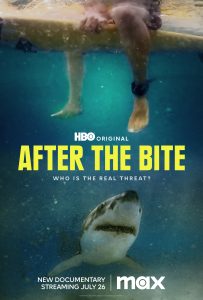
After the Bite invites viewers to reflect on humanity’s relationship with nature, particularly in light of a recent shark attack in Cape Cod. Directed by Ivy Meeropol, this documentary delves into the complexities of human and animal coexistence, challenging our often arrogant perception of our place on Earth.
The film centers around the tragic death of Arthur Medici, who was killed by a shark in Wellfleet, Massachusetts, in 2018. This incident occurred against a backdrop of increasing shark sightings along the coast, prompting a community grappling with how to navigate the risks posed by these apex predators. Meeropol captures a range of responses to the situation, from those advocating for coexistence through research and tagging to others seeking to assign blame to various factors, including the growing seal population.
Rather than pushing a specific narrative, the documentary thoughtfully presents diverse perspectives from community members. Lifeguard Suzy shares her fears following the attack, while local resident John expresses his concerns about safety for his family. Through these interviews and observational footage—such as Suzy’s commute to work or fishermen discussing the impact of climate change—After the Bite paints a vivid picture of a community in turmoil.
The film doesn’t just focus on humans; it emphasizes the interconnectedness of all species involved. In one striking scene, viewers see the world from a seal’s perspective as it interacts with fishermen. This approach underscores Meeropol’s commitment to treating animals as equals within the ecosystem.
Amidst the informative segments, the documentary also delivers thrilling moments, including a close-up encounter with a great white shark feeding on a whale carcass. This blend of awe and fear captures the reality of life in the ocean.
Meeropol expertly balances various tones throughout the film, showcasing the joy of beach culture alongside the underlying tension of living with sharks. The community’s relationship with the ocean is brought to life through a range of experiences, from a shark-themed burlesque show to the anxiety of spotting a fin in the water.
In a memorable moment, surfer Dana humorously engages with beachgoers before heading out to surf, remarking, “Humankind must learn humility in the face of nature.” His casual attitude reflects the complex dynamic between risk and enjoyment that defines life in this coastal town.
After the Bite ultimately captures the essence of a community wrestling with its fears while embracing the beauty of the natural world, reminding us of our place within it.
- Albert Brooks: Defending My Life
Documentary | 88 minutes | NR | 2023
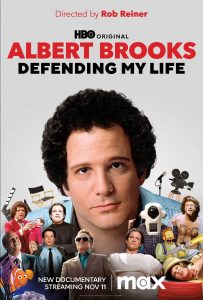
Albert Brooks has long been a titan of American comedy, and Albert Brooks: Defending My Life serves as a heartfelt homage to his unique talent and insights. Directed by Rob Reiner, who has known Brooks since their high school days, the film is framed around a relaxed dinner conversation between the two at a Los Angeles restaurant. It traces Brooks’ journey from his childhood in a showbiz family to his successful career as a standup comedian, filmmaker, and character actor in various films and television series.
This documentary isn’t a detached analysis; instead, it feels like a celebratory gathering for a beloved figure still very much alive. Reiner cleverly references an episode of Curb Your Enthusiasm, where Brooks is humorously honored yet humorously revealed to be a hoarder, reflecting the kind of comic twist that Brooks himself often employed in his work. The film features numerous tributes from colleagues like Larry David, Chris Rock, and Sarah Silverman, all testifying to Brooks’ profound influence on comedy.
What stands out in this documentary is its ability to showcase not just the quality of Brooks’ work but also his creative integrity throughout his career. Brooks, born Albert Einstein, maintained a commitment to his vision, stating, “I only saw one road!” His approach led to groundbreaking moments in comedy and film.
In the mid-70s, Brooks had a pivotal meeting with Lorne Michaels, who invited him to host Saturday Night Live. Instead, Brooks proposed featuring a different host each week, an idea that revolutionized the format. He chose to present short films, effectively rebranding himself as a filmmaker and paving the way for his feature-length projects.
His debut film, Real Life, was a satirical take on documentary filmmaking, depicting a director who becomes overly involved in the lives of his subjects. Although it initially flopped at the box office, it is now considered a precursor to reality television. Brooks’ later films, such as Modern Romance and Lost In America, continued to explore themes of obsession and the complexities of modern life.
The documentary also touches on Brooks’ personal history, including the impact of his parents on his career. His father, Harry Einstein, passed away on stage, which deeply influenced Brooks’ perspective on comedy as a shield against emotional vulnerability. The film provides insights into Brooks’ evolution as an artist, particularly with his film Mother, which reflects on his complicated relationship with his mother.
Albert Brooks: Defending My Life is a rewarding experience for both longtime fans and newcomers alike, offering a rich exploration of a comedic genius whose work has shaped the landscape of modern humor. Through personal anecdotes and reflections from those who know him best, the film captures the essence of Brooks’ enduring impact on the world of comedy.
- Aurora’s Sunrise
Animation | 97 minutes | 2023

In reflecting on the untold stories of our elders, I think of my grandfather, who served in World War II and, for decades, chose silence over sharing his experiences. Near the end of his life, he began to open up at family gatherings, revealing fragments of his past that had clearly haunted him. Watching Aurora’s Sunrise, I felt a poignant connection to that desire to record history, as this remarkable film intertwines animation, archival footage, and an early silent film to tell a harrowing yet vital story.
The film centers on Aurora Mardiganian, born in 1901 in the Ottoman Empire. In 1915, she became one of many victims during the Armenian genocide, witnessing unimaginable atrocities as she was forced into a death march that nearly cost her life. Her harrowing journey led her through a slave market, eventual escape, and a long journey to America, where she penned Ravished Armenia, the basis for the film Auction of Souls, which aimed to raise awareness about the plight of Armenians. Parts of this long-lost film were rediscovered in the 1990s, allowing for a powerful revival of Aurora’s story.
Aurora’s Sunrise serves as a poignant historical documentary about the Armenian genocide, but its true strength lies in its personal perspective. Through Aurora’s eyes and voice, we confront the immense loss of stories that could have shaped our understanding of history. Director Inna Sahakyan masterfully blends Aurora’s own narration with animated recreations of her experiences, creating a tapestry of truth and memory that resonates deeply.
While some of the animation could benefit from a sharper aesthetic, this stylistic choice may be intentional, evoking a sense of nostalgia. The score by Christine Aufderhaar enhances the emotional weight of the animated segments, enriching the viewing experience without veering into manipulation.
The moments when the film shifts to Auction of Souls are particularly gripping. This silent film, featuring a large cast and shot in the California desert, captures the stark realities of the genocide. It stands as both a piece of activism and a breathtaking achievement in filmmaking, emphasizing the risks taken to document these horrors.
In an age where we are bombarded with content, Aurora’s Sunrise serves as a crucial reminder of the importance of truly seeing and hearing the stories of those who lived through history. As it explores both trauma and resilience, it encourages us to reflect on the narratives that shape our collective memory.
- Bill Russell: Legend
Documentary | R | 2023
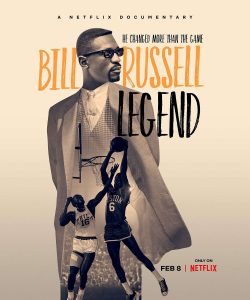
Netflix continues to elevate its collection of sports documentaries with Bill Russell: Legend, a two-part film directed by the acclaimed Sam Pollard, known for MLK/FBI and co-directing Mr. Soul!. This comprehensive documentary pays tribute to one of basketball’s most transformative figures, showcasing not only Russell’s unparalleled contributions to the game but also his vital role as a civil rights advocate. Often regarded as one of the top players in NBA history, Russell’s legacy extends far beyond the basketball court.
Spanning nearly 200 minutes, Pollard’s film deftly weaves together Russell’s athletic accomplishments and personal life, using excerpts from his memoirs narrated by Jeffrey Wright, with the entire project narrated by Corey Stoll. Russell, who passed away last year, was a groundbreaking athlete during a time when the sport was predominantly white. His activism and commitment to equality are highlighted throughout, revealing how he stood shoulder to shoulder with figures like Muhammad Ali and supported movements like Colin Kaepernick’s protest against racial injustice.
Pollard captures Russell’s brilliance not just through his statistics, but also by exploring his profound understanding of the game. Fascinating anecdotes reveal Russell’s early fascination with art and how that influenced his basketball IQ; he could anticipate opponents’ moves before they even made them. The film is rich in archival footage, showcasing Russell’s unique playing style that set him apart from his peers.
Despite leading the Celtics to an astonishing 11 NBA championships in 13 years—a feat unmatched in sports history—Russell often faced an uphill battle for recognition, particularly from the Boston media. The documentary features insights from prominent players like Steph Curry, Larry Bird, and Magic Johnson, who acknowledge Russell’s influence on their own careers, with Shaquille O’Neal humorously suggesting that Russell deserves a cut of every big man’s salary for paving the way.
While some segments focus less on basketball analysis and more on Russell’s life off the court, these personal narratives resonate powerfully. Pollard includes interviews with Russell, his daughter, and former teammates, providing a well-rounded view of the man behind the legend.
Russell’s awareness of the societal pressures he faced adds depth to his legacy. The documentary highlights not only his athletic prowess but also his commitment to social justice, showcasing his participation in marches alongside Martin Luther King Jr. This multifaceted portrayal challenges viewers to reconsider their understanding of Russell as merely an athlete; he was a thinker, a pioneer, and sometimes a complex teammate.
In essence, Bill Russell: Legend goes beyond the highlights, offering a deeper exploration of a figure whose impact resonates throughout history. For anyone who respects Russell’s contributions to the NBA and society, this documentary is a must-watch.
- Carpet Cowboys
Documentary | 2023

You may not know Dalton, Georgia, but you’ve likely encountered its products. Known as the “Carpet Capital of the World,” this small town produces 85% of the carpets used in the United States. In Carpet Cowboys, co-directors Emily MacKenzie and Noah Collier explore the rich yet often overlooked narrative of this industry and its colorful characters, from artisans to scientists. However, their film also serves as a poignant reflection on the disintegration of the American Dream.
The documentary opens with striking visuals of the intricate machinery that weaves countless threads into the carpets we walk on daily. “It is the canvas on which all the other art rests,” remarks Lew Migliore, one of the many vibrant figures featured. Viewers meet Doug and Lloyd Caldwell, a father-son duo who have operated their family carpet business for over half a century. As they sit in front of a bold, swirling red carpet, Lloyd recalls how “this industry was really put together by north Georgia hillbillies, and half of them couldn’t read or write.”
Another key figure is freelance textile designer Roderick James, a Scottish expat who embodies the charming eccentricity of this world. Alongside his partner Jon Black, a musician known for his catchy jingles, Roderick’s story stands out amid the documentary’s broader themes.
In a moving moment early on, Jon takes the filmmakers on a tour, pointing out the remnants of a neighborhood where 36 homes were razed to make way for corporate expansion. He reflects on the loss of these homes but acknowledges the jobs created in their place. “It’s just part of a cycle,” he notes, as the camera captures an empty lot where memories once thrived. This juxtaposition of job creation and community destruction echoes the struggles faced by many.
The film captures the industry’s decline, highlighting the impact of corporate consolidation and deregulation that has pushed small family-run businesses to the brink. Lee Philips, a professional focused on stress testing and stain resistance, reveals that the region once boasted around 480 mills within a 25-mile radius, but by the 1990s, that number dwindled to a mere dozen. The camaraderie that once defined this community is fading, replaced by faceless corporations driven solely by profit.
Roderick’s journey epitomizes the shifting American Dream. Clad in a white Stetson and American flag scarf, he seeks inspiration in nature, hoping to translate its beauty into his textile designs. His narrative adds a layer of depth, revealing the disillusionment many feel in a changing economy. “I really don’t know where America’s going right now. I thought I did,” he reflects, encapsulating the uncertainty that looms over many.
One of the film’s most striking moments features Philips’ young son, a budding entrepreneur who pitches his invention on “Shark Tank.” His success feels eerily representative of the cutthroat capitalism that permeates modern life. Years later, the boy, now a teenager, shares that his definition of success is simply “whenever you can just kind of chill,” a sentiment that resonates deeply amid a culture of relentless ambition.
As Roderick contemplates leaving Georgia for a new life abroad, Jon grapples with the uncertainty of what that would mean for him. Their partnership provides purpose and community, yet Roderick seems unaware of the ramifications of his potential departure.
Toward the film’s conclusion, MacKenzie and Collier embrace a cinematic homage to the Western genre, capturing sunsets over beaches and graveyards. Some characters chase new dreams while others are left reminiscing, haunted by “echoes of the past.” The industrial synth score underscores the tension between the human stories of Dalton’s workers and the cold efficiency of the machines producing the carpets.
As the credits roll, viewers witness employees in a cramped, fluorescent-lit space, tirelessly testing carpet samples—a process that requires an exhausting 20,000 passes. This endless cycle of labor mirrors the experiences of those trapped in an economic landscape that prioritizes profit over community, leaving many to endure the isolation and despair that accompanies such a reality.
- De Humani Corporis Fabrica
Documentary | 118 minutes | 2023
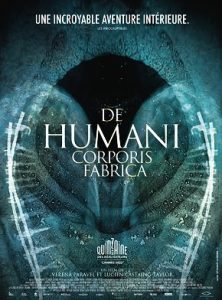
In June 2003, the late founder of this site shared a memorable reaction to Vincent Gallo’s The Brown Bunny, humorously reflecting on his discomfort with the film. Watching De Humani Corporis Fabrica, a documentary by Lucien Castaing-Taylor and Verena Paravel, I couldn’t help but wonder how he would perceive its “entertainment value.” This film offers a unique view into the operating room, showcasing surgeons using micro-cameras for procedures like prostate removal, cesarean sections, brain surgery, and more. It raises intriguing questions about the nature of its content and its impact on viewers.
The title, which translates from Latin to “On the Fabric of the Human Body,” may not break new ground in documentary filmmaking, but it presents a compelling exploration of medical realities. The film captures shocking and raw images while placing the audience in close proximity to the doctors and technicians at work. Although we don’t often see them, their voices provide context. The film opens with a poignant discussion among ICU staff about burnout, highlighting the emotional toll of caring for patients, especially those with long-term ailments.
The dialogue during various medical procedures ranges from the mundane to the unsettling, showcasing the humanity of the healthcare workers. The film also addresses the sorrow surrounding patients with dementia and other mental health issues, wandering aimlessly through dimly lit corridors.
Castaing-Taylor and Paravel are known for their immersive documentaries, often eschewing traditional narrative structures. There are no voiceovers or explanatory interviews, leaving viewers to navigate the material on their own, reminiscent of their earlier work, Leviathan. While some moments in De Humani Corporis Fabrica may come across as confrontational, they also invite reflection.
As someone who has spent considerable time in hospitals, I found myself contemplating the emotional weight of the experiences depicted. The film is both educational and thought-provoking, offering insights into medical procedures that many may never witness firsthand.
- Every Body
Documentary | 92 minutes | 2023
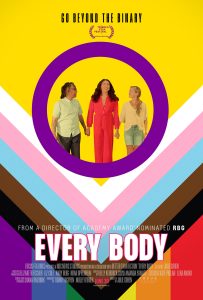
Every Body offers a poignant and insightful examination of intersex individuals, a group often overlooked in discussions about gender and identity. This documentary not only sheds light on their experiences but also expresses a blend of empathy and justified anger about the systemic challenges they face. Intersex people—who make up a little over one percent of the population—are born with variations in chromosomes or reproductive anatomy that complicate their classification as strictly male or female.
The film delves into the various forms of intersex conditions, highlighting how many individuals are assigned a gender at birth that doesn’t truly reflect their identity. This imposition often results in a lifelong struggle to conform to societal expectations, which can lead to psychological distress. Medical professionals historically advised parents to raise their intersex children as either boys or girls, prioritizing societal norms over the children’s true identities. This often involved recommending unnecessary surgeries to conform their bodies to binary standards, a practice that has faced growing scrutiny and criticism.
Anchoring the documentary are three intersex activists who share their personal journeys: Alicia Roth Weigel, River Gallo, and Sean Saifa. Weigel, a lobbyist and author, actively participates in advocacy for intersex rights, while Gallo is a non-binary actor and filmmaker who made history as the first openly intersex actor to portray an intersex character. Saifa, a man of color, famously confronted a doctor on national television regarding a harmful procedure he underwent as a child.
The film effectively interweaves their narratives with historical context and medical facts, crafted with clarity and precision by director Julie Cohen and editor Kelly Kendrick. Despite the weight of its subject matter, Every Body avoids feeling overwhelming or cluttered, using a range of visual and graphic elements that enhance the storytelling rather than distract from it.
Throughout the film, the personal stories resonate with universal emotions, illustrating the impact of societal expectations on identity. It also serves as a critical commentary on the medical establishment’s treatment of intersex individuals, using editing as a powerful tool to juxtapose archival footage of outdated medical beliefs with the current perspectives of the subjects. This technique underscores the harmful misconceptions that have long persisted within the medical community.
The documentary also excels in its use of music and visual storytelling. For instance, the opening credits feature a lively cover of “Be My Baby” paired with clips of gender reveal parties, cleverly highlighting how parents’ identities are often tied to the gender binary imposed by medical authorities. This sets the tone for the exploration of how intersex children navigate their lives, either conforming to societal norms or courageously rejecting them.
Every Body is not just a film; it’s a call to awareness and action, illuminating the struggles and resilience of intersex individuals. It invites viewers to reflect on the broader implications of identity, medical ethics, and the importance of acceptance in a diverse society.
- Four Daughters
Documentary | 107 minutes | 2023
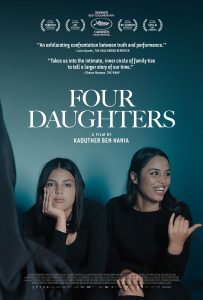
In Four Daughters, director Kaouther Ben Hania explores the intricate bonds among women in a family, particularly under the weight of patriarchal and cultural pressures. While the title suggests a focus on motherhood, the documentary delves deeper into the complexities of sisterhood, revealing how shared experiences can both unite and divide.
At the heart of the story is Olfa Hamrouni and her four daughters: Eya, Tayssir, Ghofrane, and Rahma. The narrative takes a poignant turn as Ghofrane and Rahma, the two eldest daughters, radicalized and left to join ISIS years ago. Through Olfa and her remaining daughters, the film examines their lives before and after this loss, unpacking the intersection of femininity and cultural expectations.
The absence of Ghofrane and Rahma is filled by actresses Ichraq Matar and Nour Karoui, who reenact moments from the sisters’ lives. This artistic choice not only provides a visual representation of their memory but also raises questions about the emotional toll on both the real family members and the actors. When the sisters witness their experiences brought to life, it creates a profound and sometimes painful connection, highlighting the complexity of their shared trauma.
The film features actress Hend Sabry, who steps into Olfa’s memories during the reenactments. This dynamic allows for a unique interplay where Olfa sometimes guides and corrects the portrayal, showcasing the film’s commitment to empowering women to reclaim their narratives. Sabry’s involvement is particularly striking as she challenges Olfa on her traditional views, pushing for a dialogue about the patriarchal norms that have shaped their lives.
A noteworthy moment arises when actor Majd Mastoura, who embodies male figures in their lives, struggles with the emotional weight of the role, prompting a conversation about the ethics of performance in such a deeply personal story. This tension underscores the documentary’s exploration of how trauma is shared, portrayed, and potentially exploited in the process of storytelling.
Despite the potential for bias in the reenactments, Ben Hania’s approach is anchored in emotional truth, blending documentary techniques with a nuanced understanding of her subjects. The film captures a range of feelings—nostalgia, despair, anger—illuminating the sisters’ journeys toward healing. Through the reenactments, they articulate unspoken thoughts and relive moments filled with longing, allowing for a therapeutic exploration of their pasts.
Four Daughters avoids vilifying any character, instead presenting each woman as a complex individual shaped by their circumstances. The generational differences are particularly striking, showcasing the tension between Olfa’s traditionalism and her daughters’ varying responses to the pressures of society, from extremism to modern feminist ideals.
Ultimately, the film is a rich examination of family dynamics, societal roles, and the ongoing quest for identity and empowerment. It invites viewers to reflect on the multifaceted nature of womanhood and the emotional costs tied to navigating their place in the world.
- Holy Frit
- Documentary 119 minutes ‧ 2023
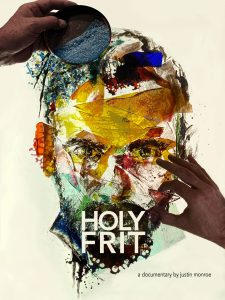
On December 22, 2014, the Wall Street Journal published an article titled “Window Pains: Stained Glass Faces Dark Days,” highlighting Judson Studios in Los Angeles, a stained glass studio operating since 1897. The article noted the declining demand for stained glass, traditionally associated with churches, as church attendance has waned and architectural styles have shifted toward more modern designs. This raises the question: Is stained glass destined to become an obsolete art form, much like illuminated manuscripts?
Directed by Justin S. Monroe, the documentary Holy Frit immerses viewers in the lively atmosphere of Judson Studios, focusing on the artisans dedicated to this ancient craft. Central to the narrative is Tim Carey, a former oil painter turned stained glass designer. The film chronicles a significant commission from the Church of the Resurrection in Kansas City for a colossal stained glass window, measuring 4,000 square feet—almost as large as a basketball court. For context, the famed windows of Chartres Cathedral and Notre Dame are much smaller, at 1,224 and 1,406 square feet, respectively. Tim is tasked with creating a design that can meet this monumental challenge.
Holy Frit documents the journey from initial design to the window’s unveiling, spanning nearly two years filled with obstacles and intense pressure. Executive director David Judson expresses the weight of the project, stating, “What keeps me up at night is we don’t know how we’re gonna do this.” The window consists of 161 panels, each measuring 4 feet by 5 feet, requiring an innovative approach. Tim’s vibrant, almost psychedelic design features intricate details, swirls of color, and fantastical elements, pushing the boundaries of traditional stained glass techniques.
To achieve this vision, the studio invites Narcissus Quagliata, a renowned stained glass artist known for his modern techniques. He introduces the innovative use of “frit”—finely ground colored glass sprinkled onto panels, fusing during firing to create painterly effects. Quagliata’s guidance helps the team explore new methods while fostering a sense of collaboration and camaraderie.
Monroe’s documentary excels at intertwining the technical process with broader themes of art, faith, and personal growth. Tim’s journey is central, showcasing his struggles and sarcasm as he navigates the pressures of the project. Other characters, like the glass cutter who repeatedly emphasizes the looming deadline and the truck driver handling the delicate panels, add depth to the narrative. Notably, the documentary also highlights Quentin, a young man overcoming past challenges who transforms from a floor sweeper into an essential part of the studio’s success.
Holy Frit feels deeply personal, capturing the emotional weight of the creative process. The climax at the unveiling is genuinely moving, illustrating the pride and transformation experienced by Quentin and the entire team. This documentary not only sheds light on the intricate world of stained glass but also celebrates the power of belief and opportunity in the lives of those involved. Monroe’s intimate storytelling brings to life a subculture that many might overlook, making the beauty of stained glass art accessible and resonant.
- I Got a Monster
Documentary 103 minutes ‧ 2023

The police motto “To protect and to serve,” coined in California in 1963, has often been distorted in contemporary America. With over $1.5 billion spent on settling claims related to police misconduct, the systemic issues within law enforcement are glaring.
In March 2017, seven officers from the Baltimore Police Department were indicted on federal corruption charges, exposing a decade of unchecked misconduct. The Gun Trace Task Force (GTTF) scandal revealed a culture where officers exploited the very citizens they were sworn to protect, engaging in robbery and wrongful arrests.
Based on the nonfiction book I Got a Monster: The Rise and Fall of America’s Most Corrupt Police Squad by Baynard Woods and Brandon Soderberg, this documentary delves into the GTTF’s story through the eyes of defense attorney Ivan Bates. He represented victims of Sgt. Wayne Jenkins, whose aggressive tactics led to significant mental distress and wrongful imprisonment. Bates poignantly questions how such failures could persist unnoticed: “The signs were there; we just didn’t pay attention.”
The film evokes a blend of The Untouchables and The Wire, but it’s Bates’ heartfelt testimony that truly resonates. His reflections on the systemic nature of police misconduct and its roots in historical injustices provide a stark and compelling narrative. Bates asserts, “It’s scary to think that Jenkins and the GTTF had such latitude and resources to go after people.”
As the documentary unfolds, it tracks the eventual downfall of Jenkins and his colleagues, all of whom were sentenced to federal prison. Baltimore has since paid over $15 million in settlements related to their actions, with federal investigations still ongoing.
In an unexpected twist, one of the film’s closing moments reveals Wayne Jenkins’ wife reaching out to Bates for representation. Bates firmly declines, stating, “What Jenkins did was wrong, and I would never represent him.”
Notably, the legendary Norman Lear is among the producers, reflecting his longstanding commitment to addressing controversial social issues. This documentary shines a light on systemic racism and corruption within the Baltimore Police Department, emphasizing that cases of misconduct will continue to surface unless substantial reforms occur.
Director Kevin Casanova Abrams skillfully presents this complex narrative from multiple perspectives, offering an unflinching look at the realities of policing in Baltimore. I Got a Monster serves as a powerful reminder of the importance of justice and accountability, leaving viewers with a call to action long after the credits roll.
- Invisible Beauty
Documentary
115 minutes ‧ NR ‧ 2023

Bethann Hardison entered the fashion industry by chance but quickly made her mark with intent and purpose. Co-directed by filmmaker Frédéric Tcheng, known for Dior and I and Halston, Invisible Beauty showcases Hardison’s journey as a model, agent, and activist. Through a mix of archival footage, personal testimonies, and behind-the-scenes documentation, the film paints a comprehensive portrait of this iconic figure in fashion.
From the outset, Invisible Beauty establishes the breadth of Hardison’s influence, featuring tributes from celebrities like Zendaya, Tracee Ellis Ross, and Whoopi Goldberg. Their praises underscore the significant impact she has had on their careers and the fashion landscape as a whole. The documentary cleverly includes recorded phone calls where Hardison shares her thoughts on the film, reminding viewers of her ongoing role in shaping her narrative.
In a time when the fashion industry was predominantly white, Hardison stood out with confidence. Her journey began in the 1960s garment district, where she was discovered by designer Willi Smith. Hardison transitioned to runway and print modeling, forming friendships with icons like Iman. Despite her success, she faced stark disparities in opportunities and recognition compared to her white counterparts. This inequity motivated her to establish her own modeling agency and co-found the Black Girls Coalition with Iman, advocating for better representation and addressing racial pay gaps.
The film presents Hardison as a complex individual—fierce yet vulnerable—offering a balanced view of her legacy. It celebrates her determination and resilience while acknowledging the personal sacrifices she made along the way. Supermodel Naomi Campbell honors Hardison as a maternal figure, while her son, actor Kadeem Hardison, reflects on her emotional distance and the weight of her expectations.
Invisible Beauty immortalizes Hardison’s influence, showcasing her relentless drive to elevate the visibility of Black beauty within the mainstream fashion world. While she revolutionized the industry, she also paved the way for future generations of fashion activists. Contemporary designer Aurora James, for instance, advocates for Black women to hold positions on company boards, beyond mere representation in advertising.
Through an exploration of Hardison’s evolution from model to activist, Invisible Beauty offers a profoundly inspiring and affectionate tribute. Her impact is unmistakable, seen in the work of leading figures in fashion and the growing demand for diversity. With intimate interviews from colleagues, friends, family, and Hardison herself, the documentary expertly highlights the origin and enduring legacy of one of fashion’s most vital icons.
- Judy Blume Forever
Documentary
97 minutes ‧ 2023
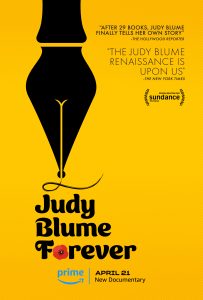
For countless fans, Davina Pardo and Leah Wolchok’s documentary Judy Blume Forever serves as a nostalgic journey back to childhood, evoking memories of eagerly reading classics like Are You There God? It’s Me, Margaret, Tales of a Fourth Grade Nothing, and Superfudge. For those unfamiliar with her work—often due to restrictions in schools—this film offers a charming introduction to the author, her life, and the inspirations behind her beloved stories. This heartfelt tribute mirrors the warm and welcoming atmosphere of Blume’s bookstore in Key West.
Before becoming a literary icon, Judy Blume was a shy child navigating a post-war world. Eventually settling into life as a housewife, she began crafting bedtime stories for her children. A pivotal moment came when a publisher recognized her talent, launching her writing career. Yet Judy Blume Forever transcends a simple biography; it explores the social shifts in America, the gender barriers Blume challenged with her writing, and her persistent battle against censorship efforts aimed at her books.
Blume narrates her own journey with warmth, sharing both humorous and poignant anecdotes, and reading excerpts from her works with infectious enthusiasm. The documentary employs the artistry of animator Angelique Georges and collage artists Andrew Griffin and Martin O’Neill to visually enhance her storytelling. Archival footage, vintage advertisements, and home videos further enrich the narrative, allowing viewers to experience significant moments in Blume’s life. Throughout, Blume remains a vulnerable yet powerful storyteller, openly discussing painful experiences, such as her father’s death and romantic disappointments, alongside the creation of her characters.
While Blume’s voice takes center stage, a diverse array of friends, family, and fans join her narrative. Childhood friends recount schoolyard adventures that later inspired her writing, while her children and husband offer insights into her life beyond the pages. The documentary features notable admirers, including writers Jacqueline Woodson, Mary H.K. Choi, and celebrities like Molly Ringwald and Lena Dunham, who share their appreciation for her work. Particularly moving are letters from children who found solace in her books—two of whom, Lorrie Kim and Karen Chilstrom, recount their lifelong correspondence with Blume during pivotal moments in their lives.
With 25 titles and over 80 million copies sold, Judy Blume Forever captures the essence of an American literary icon. The film stirs nostalgia while highlighting the power of literature and the ongoing relevance of Blume’s fight against book censorship, particularly in her home state of Florida, where efforts are being made to restrict access to her books and those by LGBTQ authors and writers of color. At one poignant moment, Blume reflects, “Through the worst times of my life, I was able to write,” emphasizing how writing provided her with a voice.
Judy Blume Forever is a heartfelt tribute to a remarkable career, celebrating an author whose works continue to resonate with generations of readers as they navigate their own journeys and find their voices.
- Kokomo City
Documentary
73 minutes ‧ R ‧ 2023
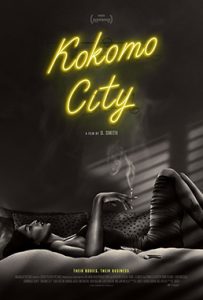
With its imaginative editing and candid portrayal of a rarely highlighted community, Kokomo City offers a vibrant look at the lives of trans sex workers. This documentary, directed by D. Smith, celebrates the experiences of four trans women—Koko Da Doll, Daniella Carter, Liyah Mitchell, and Dominique Silver—through intimate interviews set in their homes and everyday environments. Shot in striking black and white, the film draws inspiration from classic American documentaries while infusing a punk rock energy that defies conventional filmmaking norms.
- Smith, a Black, trans producer with a Grammy-nominated background, uses this film as a reclamation of her narrative after facing challenges in the music industry. The result is a dynamic and at times chaotic exploration of identity and resilience, unapologetically stepping outside mainstream expectations. The documentary embraces a raw authenticity, encouraging viewers to engage with its subjects without filters.
The film opens with a gripping monologue about a sex worker disarming a client, interspersed with playful, exaggerated reenactments that echo a pop art sensibility. This blend of humor and gravity establishes a privileged perspective for the audience, making them feel intimately connected to the stories being told. The film’s closing montage, featuring full-frontal nudity, evokes the boldness of 1990s MTV while capturing the visceral realities of the subjects’ lives.
Kokomo City contrasts dramatized scenes of their experiences with quieter, more personal moments, showcasing the humanity of its subjects. Smith’s editing style weaves together these diverse elements, creating a tapestry of shared experiences that highlight the struggles and triumphs of the Black trans community. The film also critically examines the concept of “trade”—the men who engage with these women while grappling with their own vulnerabilities.
Despite addressing harsh realities, Kokomo City radiates warmth and acceptance. Each interviewee is given space to shine, reinforcing their individuality and strength. Smith aims to dispel misconceptions about trans women, asserting their humanity and desire for love and connection. Tragically, Koko Da Doll was murdered shortly after the film gained acclaim on the festival circuit, underscoring the urgent issues faced by the community.
Overall, Kokomo City is a powerful and uplifting documentary that boldly presents the lives of trans women in a society that often overlooks or marginalizes them. It establishes its own boundaries while inviting viewers to reflect on the complexity of identity and the shared human experience.
- Little Richard: I Am Everything
Documentary
98 minutes ‧ 2023
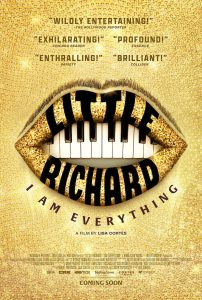
Lisa Cortés’ documentary Little Richard: I Am Everything takes a poignant look at the life of a true musical icon who left an indelible mark on rock ‘n’ roll. With the passing of Little Richard in 2020 at age 87, this film serves as both a tribute and a deep exploration of his legacy, examining the multifaceted persona of the man who called himself the “architect” of rock.
Cortés highlights three pivotal moments from Little Richard’s career that illustrate the need for such a documentary. The first occurred at the 1988 Grammys, where he and Buster Poindexter presented the Best New Artist award. Sporting a dazzling brown suit, Little Richard humorously acknowledged Poindexter’s towering hairstyle before passionately declaring, “I have never received nothing! … I am the architect of rock ‘n’ roll!” His impassioned speech earned him a standing ovation, overshadowing the actual winner, Jody Watley.
Another significant moment featured Little Richard during the 1989 Rock ‘n’ Roll Hall of Fame induction of Otis Redding, where he delivered a powerful performance and a remarkable speech that underscored his own influential legacy. The final emotional highlight comes from the 1997 American Music Awards, where he received a Merit Award and moved the audience with heartfelt reflections on his journey as the “originator” of rock.
Throughout the film, Cortés intersperses these memorable clips with electrifying concert footage and interviews from an impressive array of artists and scholars. Mick Jagger sums it up succinctly: “He was everything.” John Waters and Billy Porter also share insights, emphasizing Little Richard’s role as a pioneer for self-expression and rebellion. Lady Java, a nightclub performer and trans rights advocate, recalls the tenderness of their friendship, illustrating the complexity of his character.
Cultural commentator Jason King provides essential context, discussing Little Richard’s role within a broader social and musical landscape. He explores the contradictions that defined Richard’s life, from his secular and spiritual struggles to his navigation of sexuality and fame.
Cortés uses the Big Bang as a recurring visual motif, symbolizing the explosive impact of Little Richard’s artistry on the music world. This analogy is fitting, considering his ability to transcend conventional boundaries and challenge norms.
The film serves as a reminder of Little Richard’s unique ability to energize audiences and inspire generations of artists. As the late music journalist Nick Tosches once wrote, Little Richard’s raw energy had the power to liberate listeners from societal constraints, inviting them to embrace the chaos and joy of existence.
Little Richard: I Am Everything is a richly crafted homage that captures the spirit of a man whose influence continues to resonate, ensuring that his legacy remains celebrated and acknowledged in the annals of music history.
- Lynch/Oz
Documentary
108 minutes ‧ 2023
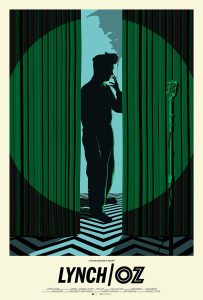
In Lynch/Oz, directed by Alexandre O. Philippe, the relationship between David Lynch’s filmmaking and the classic The Wizard of Oz is explored in a thought-provoking and imaginative way. The film combines multiple essays that delve into how this iconic 1939 movie, initially a box office failure, became a cultural touchstone, especially in the context of Lynch’s work.
The documentary kicks off with a reflection from critic Amy Nicholson on how The Wizard of Oz found its place in popular culture almost by accident. Despite its initial reception, the film’s rebirth on television made it a beloved classic. This sentiment is echoed by filmmaker John Waters, who recalls watching Oz as a child in Baltimore and muses on Lynch’s possible first encounter with it in small-town America.
Lynch himself, while not a self-identified cinephile, acknowledges the impact Oz has had on his artistry. Filmmaker Karyn Kusama recounts a Q&A session with Lynch after a screening of Mulholland Drive, where he stated, “There’s not a day that goes by that I don’t think about The Wizard of Oz.” This influence permeates his films, with elements that subtly reference Oz, such as character names and motifs reminiscent of the magical story.
The documentary features contributions from various filmmakers and critics, including Rodney Ascher and David Lowery, who each provide unique insights into the connections between Lynch’s surreal narratives and the fantastical elements of The Wizard of Oz. Philippe organizes the material with a dynamic energy, presenting a wealth of clips and references that invite viewers to see the parallels and contrasts between the whimsical world of Oz and Lynch’s often dark, enigmatic landscapes.
Lynch/Oz is not just a celebration of two cultural phenomena but also a meditation on how storytelling can capture both joy and sorrow. By juxtaposing the fantastical and the gritty, the film illuminates the emotional complexities of life beyond the cinema’s enchantment, offering viewers a fresh perspective on both Lynch’s oeuvre and the legacy of The Wizard of Oz.
- Menus-Plaisirs Les Troisgros
Documentary
240 minutes ‧ 2023

In Menus-Plaisirs Les Troisgros, acclaimed documentarian Frederick Wiseman presents a rich exploration of a renowned French restaurant, showcasing his distinctive approach to capturing the essence of institutions and their evolution. Known for his intricate portrayals of various establishments—from hospitals to libraries—Wiseman’s latest film stands out for its simplicity and depth, offering viewers a profound look at the world of fine dining.
Set in Le Bois sans Feuilles, a three-Michelin-star restaurant in Roanne, France, the documentary chronicles the meticulous processes behind creating exquisite culinary experiences. The Troisgros family has long been at the helm of this culinary institution, and the film subtly depicts the dynamic between patriarch Michel and his son César. Their interactions reflect a blend of familial ties and professional respect, often resembling a mentor-mentee relationship.
Wiseman’s filmmaking style eschews conventional documentary tropes such as interviews, titles, and voice-over narration. Instead, he immerses viewers in the lives of the restaurant’s staff and the intricacies of their work. Scenes unfold organically, allowing viewers to infer relationships and dynamics solely through the actions and dialogues of the individuals involved. This observational approach highlights the artistry of food preparation and the communal nature of the dining experience.
Throughout the film, Wiseman captures various moments—like the careful selection of ingredients, the artistry of plating, and the graceful movement of staff in the kitchen. These sequences serve as meditative reflections on craftsmanship and the dedication required to run a successful restaurant. The film’s structure, characterized by long takes and thoughtful montages, invites viewers to appreciate the visual and sensory aspects of the culinary process.
Wiseman often draws parallels between the workings of the kitchen and the broader themes of creation and impermanence. For instance, discussions about the visual presentation of dishes emphasize the importance of aesthetics in dining, while scenes featuring local farmers and cheesemakers highlight the interconnectedness of food sourcing and preparation. A striking moment occurs when Michel critiques a dish created by César, focusing on its visual appeal rather than its taste, reinforcing the restaurant’s commitment to artistic presentation.
The film’s length allows for an in-depth exploration of these themes, encouraging viewers to engage with the material at their own pace. Wiseman’s deliberate pacing fosters an appreciation for the gradual evolution of conversations and processes, showcasing the artistry inherent in food preparation and service.
Ultimately, Menus-Plaisirs Les Troisgros is a celebration of culinary artistry, family legacy, and the ephemeral nature of creation. Wiseman’s lens invites audiences to consider the beauty in the momentary, reflecting on why we document our food experiences—to capture the essence of something that is, by nature, fleeting.
- Mister Organ
Documentary
96 minutes ‧ NR ‧ 2023

Mister Organ delves into the unsettling depths of narcissism, capturing the profound impact it has on those entangled with its embodiment, a New Zealand figure named Michael Organ. Directed by David Farrier, known for his previous documentary Tickled, this film presents a gripping narrative that draws viewers into a world that feels both familiar and disconcertingly bizarre.
The documentary begins with Farrier’s exploration of an unusual story from 2016 involving Organ, who infamously clamped cars parked outside an antique store owned by Jillian. What starts as a curious examination of eccentric behavior quickly spirals into a harrowing encounter with Organ’s manipulative tendencies. Farrier’s journalistic instincts push him to investigate further, leading to a dark and often uncomfortable journey.
As Farrier gathers information, he uncovers Organ’s complex history, including legal battles and claims of grandiosity—such as his assertion of being a prince during a court case for boat theft. The film features testimonials from individuals who have crossed paths with Organ, many of whom reveal the psychological toll of their experiences. These stories illuminate a pattern of behavior that is both alarming and mesmerizing, painting a portrait of a man who thrives on control and chaos.
Throughout the film, Farrier’s approach is immersive yet vulnerable. He navigates the labyrinth of Organ’s world, documenting the fallout of his interactions while grappling with his own emotional well-being. The film takes a notable turn when Farrier becomes embroiled in a lawsuit after taking a sign from the now-closed antique store, subjecting him to Organ’s relentless legal maneuvering.
Farrier’s candid reflections reveal the tension between his pursuit of the story and the insidious nature of his subject. The film’s structure becomes increasingly chaotic, mirroring the disorienting effects of Organ’s narcissism. As Farrier struggles with boredom and frustration during their encounters, he exposes the draining impact of engaging with someone who wields their charisma like a weapon.
Ultimately, Mister Organ serves as both a captivating character study and a cautionary tale about the dangers of narcissistic manipulation. Farrier’s commitment to documenting his experiences yields a film that resonates deeply, leaving viewers both fascinated and unsettled. Through its exploration of control, delusion, and emotional turmoil, the documentary poses a powerful question: How do we navigate the complexities of relationships with those who seem to embody chaos?
In its concise runtime, Mister Organ effectively conveys the haunting essence of its subject, offering a visceral experience that lingers long after the credits roll.
- Occupied City
Documentary
262 minutes ‧ 2023
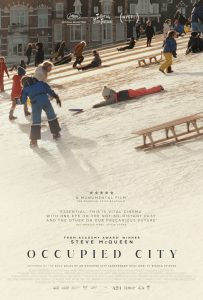
In Occupied City, Steve McQueen crafts a poignant exploration of history’s shadows, intertwining the present-day realities of Amsterdam during the COVID-19 pandemic with the haunting memories of its Nazi occupation in World War II. This ambitious documentary, filmed in the early days of the pandemic, captures the city’s somber remnants from a tumultuous past, drawing parallels between the two seismic events that have shaped human experience.
Rather than directly comparing the pandemic to wartime suffering, McQueen presents a stark juxtaposition, highlighting the responses of the city’s inhabitants to their respective crises. The result is a compelling examination of survival, loss, and the often-overlooked continuity of trauma through time.
Occupied City is a substantial departure from other recent Holocaust-themed films. Instead of focusing on individual horror or grief, McQueen offers a meditative inquiry into collective memory, selflessness, and resilience. The film is adapted from Bianca Stigter’s book, Atlas of an Occupied City, Amsterdam 1940-1945, which informs its rich narrative structure and deep historical context.
The film is narrated by Melanie Hyams and is divided into two lengthy segments, with a 15-minute intermission. The first half aligns the difficulties of the pandemic with the challenges faced during the occupation, while the second half highlights various forms of resistance against Nazi rule. Although these themes intermingle, McQueen’s storytelling weaves a dense tapestry of interconnected stories that evoke a haunting sense of dread.
Instead of chronological storytelling or traditional documentary techniques, Occupied City unfolds through a series of vivid images and narratives, often without explicit geographic markers for those unfamiliar with Amsterdam. This choice reinforces the film’s immersive quality, inviting viewers to engage with the material on a visceral level.
Hyams’ narration maintains a steady tone, but McQueen’s visual choices reveal his frustration with contemporary responses to COVID, particularly among younger populations. The contrast between historical hardships and present-day behaviors is striking, as he juxtaposes accounts of wartime famine with scenes of carefree youths. At moments, the film allows silence to punctuate its message, with cinematographer Lennert Hillege capturing the city’s empty streets, underscored by a haunting score that enhances the atmosphere of unease.
McQueen does not shy away from critiquing modern institutions, including the police, and he draws connections between historical and contemporary injustices. One particularly provocative moment features the current King of the Netherlands participating in a Holocaust memorial while reflecting on the nation’s colonial past, prompting questions about the sincerity of remembrance.
The documentary traverses various sites of historical significance, from former homes of resistance fighters to places where atrocities occurred. It captures the essence of cultural censorship, illustrating the erasure of Jewish artists and the suppression of artistic expression during the occupation.
Central to the film are the stories of resistance and resilience, portraying the lengths to which individuals went to preserve life and dignity in the face of oppression. Accounts of Jewish individuals passing as Gentiles or risking their lives to hide others emerge as powerful testaments to human courage.
The repeated use of the word “demolished” serves both as a reminder of the fragility of historical markers and as a powerful act of witnessing. Through McQueen’s lens, the remnants of the past—whether in physical form or memory—remain indelible, urging viewers to confront what can no longer be ignored.
In Occupied City, McQueen and Stigter present a haunting, beautifully constructed meditation on memory and loss, creating a cinematic experience that honors the past while prompting reflection on the present. The film’s profound impact lingers, compelling us to consider how history shapes our identities and the ways we remember those who suffered.
- Sam Now
Documentary
87 minutes ‧ 2023
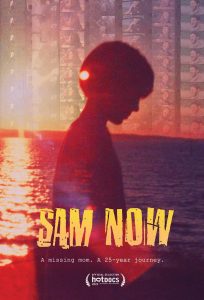
Sam Now is a poignant and empathetic documentary that explores deep themes of abandonment and family dynamics, offering viewers a potentially healing experience, particularly for those who resonate with its subject matter. Directed by Reed Harkness, the film is a compelling narrative woven from 24 years of home videos and family interviews, centering on the mysterious disappearance of Harkness’s stepmother, Jois, in 2000. Her sudden exit left a profound impact on her husband Randy and her young sons, Sam and Jared, as well as Reed himself, who was a teenager at the time.
From an early age, Harkness developed a passion for filmmaking, often casting the lively and charismatic Sam as his lead. The early footage reveals Harkness’s innate talent, showcasing inventive angles and techniques reminiscent of early silent films. The two created imaginative narratives, including a recurring series featuring a superhero called the Blue Panther, until the focus shifted when Sam expressed a desire for the character to search for his missing mother.
What unfolds next is an emotional journey into the unknown, marked by a sense of dread about Jois’s fate. When she is eventually found by the police, the revelation is both unsettling and unexpectedly mundane: Jois, who felt unfulfilled as a mother, chose to leave her family and start anew, without any dramatic backstory of abuse or addiction.
While narratives about fathers abandoning families are more common in film and literature, Sam Now offers a rare perspective on maternal abandonment, drawing parallels to works like Steven Spielberg’s The Fabelmans. This documentary emphasizes the emotional fallout experienced by the family left behind, particularly focusing on Sam, whose youthful innocence contrasts with the pain of his mother’s departure.
The film captures the brothers’ quest to uncover Jois’s whereabouts, illustrating their determination and emotional resilience as they seek answers from friends and family. Reed’s probing questions and Sam’s candid reflections provide a powerful window into the complexity of their situation.
As the film progresses, Sam’s transformation from a joyful child into a more introspective adult becomes increasingly poignant. The closing chapters reveal his reconnection with Jois, who acknowledges her regret for the pain she caused but stands by her choice, creating an emotionally charged atmosphere.
Sam Now strikes a delicate balance, offering a fair portrayal of Jois’s actions while holding her accountable for the hurt she inflicted. The film invites viewers to understand her perspective, revealing cycles of abandonment that echo across generations, rooted in her own upbringing and personal struggles.
Harkness’s film is not only a testament to his skill as a storyteller but also a profound exploration of familial love and loss. The emotional depth and care with which he portrays his family make it clear that he deeply loves and respects each character, evoking empathy for their struggles and resilience.
What makes Sam Now truly captivating is its ability to connect with audiences on a human level. Through tender cinematography and an authentic narrative, viewers feel the warmth and affection Harkness has for his family, as well as the landscapes that shape their lives. The film resonates with the emotional truth found in the works of great humanist filmmakers, capturing the essence of each individual with sensitivity and compassion.
As the story reaches its conclusion, the viewer is left with a sense of unease, hoping for the well-being of those who have endured so much. Sam Now stands out as one of the year’s most impactful films, blending personal storytelling with universal themes of love, loss, and the complexities of family.
- Savior Complex
Documentary
180 minutes ‧ 2023
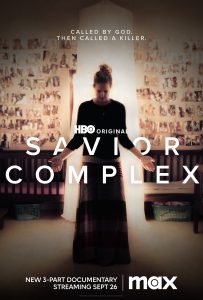
HBO’s three-part documentary Savior Complex offers a compelling and infuriating look at the controversial figure of Renee Bach, her charity work in Uganda, and the wider implications of Western charity practices. This intricately woven narrative examines themes of colonialism, privilege, and the complexities of humanitarian efforts, challenging viewers to grapple with the moral ambiguities involved. It presents a balanced portrayal that avoids simplifying the issues, making it a rich conversation starter.
Renee Bach’s journey began as a teenager on a missionary trip to Uganda, where she found a sense of purpose working in an orphanage. This led her to establish her own NGO, Serving His Children (SHC), aimed at aiding malnourished children in a region plagued by health crises. While Bach’s initiative undoubtedly saved lives, it was also marked by grave missteps, as she began performing medical procedures without proper qualifications, often relying on her instincts over medical expertise. Tragically, over a hundred children died under her care, with the actual number possibly being even higher.
The documentary highlights testimonies from various individuals, including American nurse Jackie Kramlich, who witnessed alarming practices at SHC. Kramlich describes unsafe medical practices and a troubling disregard for the advice of trained Ugandan healthcare professionals, prompting her to resign and advocate for change. Her accounts reveal a concerning dynamic where Bach’s decisions led to devastating consequences for vulnerable children.
The organization No White Saviors becomes central to the narrative, framing Bach’s actions within the context of modern-day colonialism. Director Jackie Jesko skillfully presents Bach’s story alongside broader critiques of Western interventions in Africa, showing how well-intentioned efforts can sometimes perpetuate harm. Jesko allows Bach to reveal her own blind spots, including moments that highlight her lack of awareness regarding systemic issues.
The documentary further complicates the narrative by examining the motivations and flaws of No White Saviors itself, which is led by another white American woman, Kelsey Nielsen. This irony is not lost in the film, as Nielsen’s organization calls for accountability while grappling with its own position in the complex web of race and privilege.
As the series unfolds, it dives into the contentious debate over the mortality rates associated with SHC. Bach’s team claims a mortality rate of 11%, lower than a nearby hospital’s rate of 14%, leading to questions about the real impact of her presence in Uganda. Viewers are left to ponder whether Bach’s efforts ultimately saved lives or exacerbated the crisis.
Savior Complex refrains from offering definitive answers, allowing viewers to walk away with a nuanced understanding of the individuals involved and the larger implications of their actions. It challenges the notion that divine calling can justify drastic medical interventions, emphasizing the potential dangers of such beliefs. This thought-provoking docuseries is essential viewing for anyone considering involvement in humanitarian work abroad, as it brings to light the intricate dynamics of charity, race, and ethics.
- Silver Dollar Road
Documentary
100 minutes ‧ PG ‧ 2023
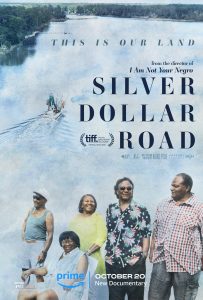
Silver Dollar Road, directed by Raoul Peck, marks a departure from his typical focus on colonial histories, showcasing a deeply personal narrative about the Reels family, Black residents of a North Carolina area with a tumultuous history. This documentary unpacks the Reels’ struggle to reclaim their ancestral land, which they trace back to their ancestors’ efforts to find freedom after slavery.
The film centers on the family’s fight against encroaching developers after a relative, Uncle Sherrick, claimed ownership of prime beachfront property through adverse possession, ultimately selling it to a development company. What follows is a decades-long battle marked by systemic racism and the challenges faced by Black families in America as they seek justice.
Peck’s storytelling is powerful and poignant, drawing on the historical context of racist real estate laws and the injustices within the legal system. The documentary emphasizes the familial bonds of the Reels, using a family tree to illustrate their connections and history, which were historically disrupted by practices aimed at separating Black families. This visual representation reinforces the film’s emotional impact, especially as it features the oldest living member, 95-year-old Gertrude Reels, who has been a steadfast advocate for her family’s claim to the land.
Throughout the documentary, warm, nostalgic images of family gatherings evoke a sense of loss for the joyful life the Reels once experienced on Silver Dollar Road. Interviews with family members, including Gertrude’s sons, Melvin and Licurtis, detail the pain of eviction and the harsh consequences of their fight. The emotional weight of their experiences echoes the broader struggles of many Black families who have faced similar injustices in their quest for land ownership.
Peck skillfully intertwines the personal narratives of the Reels with a broader historical context, highlighting the alarming trend in which 90% of Black Americans have lost their farmland over the past century. He juxtaposes the Reels’ plight with the histories of nearby white communities, illustrating the long-standing disparities caused by segregation and racism.
One particularly striking moment in the film features Gertrude’s cellphone footage capturing white developers trespassing on her family’s land. The shaky, unclear visuals symbolize the obscured nature of their fight, yet the underlying message about racism is clear. Gertrude’s emphatic assertion of their rights against these intruders is a powerful declaration of resistance.
As the documentary progresses, Peck shifts from traditional interview formats to a more immersive approach, showcasing the Reels family’s daily lives, celebrations, and cultural expressions. This transition adds depth and humanity to the narrative, portraying their resilience and connection to the land.
While Silver Dollar Road may not reach the heights of Peck’s earlier work, such as Exterminate All the Brutes, it stands as a compelling testament to the enduring struggle of Black families against systemic erasure. The film serves as both a celebration of their heritage and a stark reminder of the injustices that continue to persist in the fight for recognition and ownership.
- STILL: A Michael J. Fox Movie
Documentary
95 minutes | R | 2023

Michael J. Fox still radiates his trademark charm and humor, despite the toll that Parkinson’s Disease has taken on him. In STILL: A Michael J. Fox Movie, he reflects candidly on his life and career, revealing how the disease has intertwined with his journey as a beloved actor. Directed by Davis Guggenheim, known for An Inconvenient Truth, the film offers an intimate look at Fox’s experiences without relying on traditional talking-head interviews. Instead, it feels as though Fox is confiding in the audience, sharing his story with authenticity and wit.
The documentary artfully weaves in clips from Fox’s extensive filmography, showcasing highlights from Family Ties, Back to the Future, Teen Wolf, and more. Masterfully edited by Michael Harte, the film transitions smoothly between these nostalgic moments and Fox’s personal narrative. Reenactments and engaging narration from Fox’s own writings provide essential context, particularly in a memorable sequence where he juggles filming both Family Ties and Back to the Future, illustrating the hectic pace of his early career.
The film is infused with energy, reflecting Fox’s vibrant spirit since childhood. Archival images reveal his journey from a small boy in Canada to a Hollywood icon, and he candidly discusses the hardships he faced in the industry, including his rise to fame and the arrogance that sometimes accompanied it. Guggenheim skillfully contrasts these earlier triumphs with the challenges Fox encountered after his Parkinson’s diagnosis, poignantly highlighting his return to magazine covers for more somber reasons.
Fox shares how he learned to mask his symptoms for years, a heartbreaking revelation that underscores the lengths he went to maintain a facade of normalcy. He discusses the strategies he employed on set, such as holding props to distract from his tremors, providing a glimpse into the emotional toll of living with the disease. His struggles with alcohol as a coping mechanism are also addressed, adding depth to his narrative.
Rather than becoming a typical inspirational story, STILL maintains Fox’s self-deprecating voice throughout, preventing it from veering into sentimentality. The film’s energetic soundtrack, featuring artists like INXS and the Beastie Boys, contributes to its celebratory tone, making the experience feel dynamic and uplifting.
Ultimately, the film captures the irony of Fox’s condition: while Parkinson’s robs him of physical control, it has also led to moments of profound mental stillness. The reflective moments he now experiences resonate deeply, showcasing a resilience that transcends mere entertainment and offers valuable life lessons.
- The Deepest Breath
Documentary
108 minutes | 2023
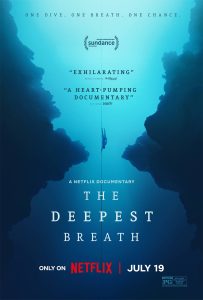
Free diving requires a unique type of individual, one willing to embrace the darkness of the ocean without the safety of oxygen. Laura McGann’s documentary The Deepest Breath centers on Alessia Zecchini, an Italian diver striving to break world records, and Stephen Keenan, a safety diver dedicated to supporting free divers during their perilous descents.
Visually breathtaking, the film features stunning underwater cinematography that captures the beauty and danger of this extreme sport. Viewers are immersed in the vastness of the ocean, witnessing the awe-inspiring and often terrifying experience of free diving. The pursuit transcends physicality, delving into the mental challenges that divers face. As former champion Natalia Molchanova noted, “Mental relaxation is the foundation of free diving.”
The narrative alternates between Zecchini and Keenan, showcasing their distinct paths: Zecchini’s lifelong passion for free diving and Keenan’s journey of self-discovery that led him to the sport. The film employs voiceovers from interviews and podcast clips, enhancing its emotional depth while hinting at the tragic events that unfold.
Zecchini’s inspiration came from Molchanova, who vanished during a dive in 2015, awakening Zecchini to the sport’s inherent dangers. This realization brought her mental struggles to the forefront, as she grapples with the fear of the abyss: “It’s black. It’s dark. You feel locked inside,” she reflects.
Despite her intense ambition, Zecchini’s competitive spirit led to dangerous consequences. After suffering blackouts during dives, she met Keenan at a competition in 2017. He became her mentor and partner, helping her overcome her challenges. Just days after their training began, Zecchini broke the world record for free diving at 102 meters, only to have it surpassed by fellow diver Hanako Hirose. Determined, she reclaimed the record the very next day at 104 meters, solidifying their bond.
The film also explores the physical toll free diving takes on the body. Divers face risks of brain damage, lung injuries, and the terrifying phenomenon known as “lung squeeze.” McGann includes intense footage of divers as they resurface, struggling for breath and in need of immediate medical attention.
Through a mix of competition footage, personal videos, and interviews—including poignant reflections from the fathers of Zecchini and Keenan—the documentary paints a vivid picture of the free diving community. These individuals, drawn to the depths, understand the risks involved, yet find joy and purpose in their passion.
With a haunting tone, The Deepest Breath illustrates the allure of the ocean’s depths and the profound connections formed within this tight-knit community. It conveys the serene beauty of free diving while capturing the adrenaline and emotional stakes involved. As Molchanova described the depths, “It’s like being in the last quiet place on earth,” highlighting the paradox of risking one’s life for moments of peace and tranquility in the deep blue.
- The Disappearance of Shere Hite
Documentary
116 minutes | 2023

Long before her disappearance from public discourse, Shere Hite’s influence was felt in sociology classrooms, where her pioneering research on female sexuality was often compared to that of Kinsey and Masters and Johnson. While those figures received adaptations in film and television, Hite’s contributions faded into obscurity. Nicole Newnham’s powerful documentary, The Disappearance of Shere Hite, resurrects her legacy and reintroduces her groundbreaking work to a new generation.
Newnham weaves together Hite’s writings, surveys, media appearances, and interviews with friends and former partners to craft a vivid portrait of an extraordinary woman. Hite, a blend of intellect and beauty, navigated a male-dominated landscape, modeling in sexist advertisements while critiquing their superficiality. Her findings, which included stark revelations about women’s dissatisfaction in relationships and the widespread ignorance regarding female anatomy, positioned her as a threat to the status quo—and came at a significant personal cost.
The documentary is driven by Hite’s own words, many of which are narrated by Dakota Johnson, who captures the essence of Hite’s breathy, emotive voice. This intimate narration reveals the pressure Hite faced as she challenged societal norms and dealt with backlash from conservative critics. The film explores how this scrutiny affected her spirit and led to her eventual retreat from the spotlight, a journey marked by both righteous anger and profound vulnerability.
Newnham, known for Crip Camp, benefits from a rich visual archive of Hite’s life, filled with television appearances and photographs. The editing by Eileen Meyer artfully integrates historical footage that contextualizes Hite’s findings, portraying the everyday lives of women during her era. The documentary captures moments from the feminist movement and significant cultural events, illustrating how the personal was intertwined with the political in Hite’s work.
The Disappearance of Shere Hite serves as both a tribute and a reclamation of her legacy. In an era where reproductive rights and LGBTQ protections are under threat, the film resonates deeply, reminding viewers of Hite’s significance and the sacrifices she made for her convictions. It delves into her cultural impact, highlighting her connections with other women and her activism against homophobic campaigns.
Through its rich archival material and compelling storytelling, the documentary not only mourns the erasure of Hite’s contributions but also celebrates the community she fostered and the enduring relevance of her work. The Disappearance of Shere Hite is a vital exploration of a woman who dared to challenge the patriarchy and speaks to the importance of recognizing those who paved the way for future generations.
- The Secrets of Hillsong
Documentary
2023

In the mid-2010s, Hillsong Church, the Australian megachurch, reached unprecedented heights. With its celebrity pastor Carl Lentz famously baptizing Justin Bieber in the home of NBA player Tyson Chandler, the church garnered massive attention. By 2015, Hillsong reported over $100 million in revenue, largely untaxed, solidifying its status as a cultural phenomenon.
However, the glamour turned sour in 2020 when Lentz admitted to extramarital affairs, leading to his public dismissal by church leader Brian Houston. Investigations into Hillsong’s operations revealed deeper issues, including allegations of discrimination, psychological and sexual abuse, and financial mismanagement. As former congregant Mary Jones aptly states, “You plant things in rotten soil, you gonna have rotten fruit.”
The Secrets of Hillsong, a compelling four-part docuseries, scrutinizes the church’s façade, revealing its inner workings and the experiences of its disenchanted members. Directed by Stacey Lee, the series portrays Hillsong as more than just a religious institution; it explores its identity as a global business with over 100 churches in 30 countries, all while delivering popular worship music.
While the documentary excels in its accountability and emotional resonance, it sometimes falls into familiar territory, featuring reporters who emphasize the depth of the scandal. Nevertheless, the editing by Eva Dubovoy keeps the narrative engaging and focused, dispelling the church’s image as progressive. Despite its diverse congregations, Hillsong often sidelined voices that weren’t white, male, and heterosexual.
This series is an exploration of spiritual abuse, narrated from within. Lentz, now away from the spotlight, appears on camera for the first time since his exit. Sporting a new look and working in obscurity, he reflects on his journey through therapy and the personal failures that led to his public downfall.
Rather than demonizing Lentz, the documentary creates space for him and his wife, Laura, to discuss their struggles, including the impact of infidelity on their marriage. Lentz shares his experience of childhood sexual abuse, a revelation that adds depth to his character and sheds light on the church’s larger narrative.
The series delves into the troubling history of Hillsong’s founder Brian Houston, whose father, Frank Houston, faced multiple accusations of sexual abuse. Despite knowing of these allegations, Brian reportedly took steps to shield his father from scrutiny, raising questions about accountability within the church. The ongoing trial against Brian for concealing these allegations underscores the series’ exploration of corruption and complicity.
The Secrets of Hillsong is an empathetic investigation into the church’s dark underbelly, revealing the disparity between its public image and the harsh realities faced by many of its congregants. The series culminates in a poignant reflection on faith, leaving viewers to ponder how their experiences within Hillsong influence their relationship with God. Perspectives range from those who have turned away from religion to others who have found solace in smaller communities. Even Lentz, while grappling with his past, continues to wear a crucifix, symbolizing the complex journey of faith and redemption.
- The Spirit of ’45
Documentary
94 minutes, 2023
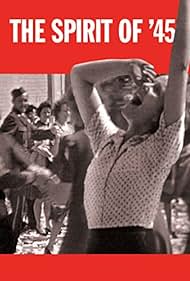
Ken Loach’s The Spirit of ’45 offers a compelling examination of the transformation of British social services following World War II, illuminating a historical narrative often overlooked or misrepresented in textbooks. The film challenges the prevailing narrative that attributes societal issues solely to government intervention and taxes, positing instead that systemic change is essential for progress.
This documentary serves as an oral history, featuring firsthand accounts from individuals who lived through the hardships of the 1930s, ’40s, and ’50s. Many interviewees were elderly at the time of filming, sharing memories that paint a vivid picture of the poverty experienced during this era. Their calm reflections reveal a stark reality: severe deprivation was normalized for the working class in Britain, contrasting sharply with the experiences of the affluent.
One interviewee describes the squalor of England’s slums as some of the worst in Europe, recounting nights spent in beds infested with fleas, only to face punishment at school for their unclean appearance. Stories of struggle are prevalent, with many families surviving on minimal diets, often limited to bread and potatoes. Dot Gibson, a notable voice in the documentary, shares how her grandfather resorted to pawning his only suit each week to provide for his family.
The Labour Party’s unexpected victory in 1945, succeeding the coalition led by Winston Churchill, marked a significant shift in the political landscape. Loach highlights the public’s disillusionment with Churchill, who was seen as ill-equipped to address the challenges of peacetime, alongside lingering sentiments regarding his party’s appeasement policies.
The documentary underscores a critical question: why could the UK finance a massive war effort while neglecting the welfare of its citizens afterward? The Labour government’s victory led to the implementation of extensive social programs, most notably the establishment of the National Health Service—an achievement still sought after in the United States today.
Loach emphasizes a recurring theme: expenditures on war are rarely scrutinized, whereas spending on social welfare is often criticized. This pattern persists globally, with political rhetoric framing defense spending as a necessity, while questioning it is deemed unpatriotic.
The film also examines the impact of the Beveridge Report of 1942, which laid the groundwork for the Labour Party’s success. Author William Beveridge’s insight—that philanthropy alone is inadequate for meaningful change—advocated for substantial taxation and the funding of social programs to uplift the poor.
The Spirit of ’45 is a poignant documentary that sheds light on a significant yet often neglected period in British history. Although some segments feel rushed in their conclusions, the film remains a powerful testament to Loach’s commitment to exploring the lives of the working class. This documentary can serve as both an introduction and a complement to his broader body of work, which consistently highlights the struggles of the underprivileged in society.
- The Storms of Jeremy Thomas
Documentary
94 minutes, 2023
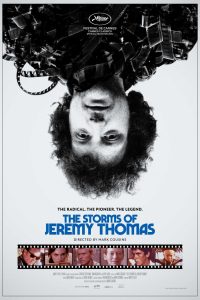
Mark Cousins, known for his unique blend of film criticism and filmmaking, presents The Storms of Jeremy Thomas, a captivating exploration of one of cinema’s most influential producers. Cousins, acclaimed for works like The Story of Film: An Odyssey, weaves personal insights and reflections throughout this engaging documentary, which follows Thomas on a road trip from the UK to the Cannes Film Festival.
The film serves as a compelling portrait of Thomas, best known for producing iconic films such as The Last Emperor, Merry Christmas, Mr. Lawrence, and Sexy Beast. Despite his extensive contributions to cinema, Thomas remains relatively unknown to the general public, which allows Cousins to craft a fresh narrative around his life and work.
Cousins captures Thomas’s essence through a blend of interviews and footage from their Cannes journey, with Thomas’s thoughts interspersed as voice-over narration. This technique initially feels disjointed but ultimately creates a poignant and reflective tone, as if Thomas is offering a candid exit interview while still very much alive.
Throughout the film, Thomas’s experiences are narrated against the backdrop of significant collaborations with renowned directors like Bernardo Bertolucci and David Cronenberg. His insights reveal a deep admiration for the artistic spirit, as he reflects on memorable moments, such as the premiere of Crash and interactions with stars like Debra Winger and Tilda Swinton, who share their appreciation for his creativity and openness.
Cousins’ narrative sometimes veers into poetic territory, likening Thomas to influential figures in literature and art, which adds an intellectual layer to the film. The documentary is structured around thematic “storms,” exploring topics like sexuality and mortality, and emphasizing the richness of the films Thomas produced. It encourages viewers to seek out complex, thought-provoking cinema that challenges societal norms.
In interviews, Thomas expresses his preference for countercultural works over mainstream blockbusters, highlighting the allure of films that push boundaries and invite deeper exploration. The documentary effectively argues for the importance of embracing challenging art that reflects psychological complexity and human experience.
The Storms of Jeremy Thomas ultimately serves as both a tribute to its subject and a broader commentary on the evolution of cinema. It invites audiences to reflect on the value of films that provoke thought and emotion, contrasting them with today’s more sanitized offerings. Through this engaging journey, Cousins champions the spirit of artistic risk-taking that Thomas embodies.
- The Stroll
84 minutes, 2023
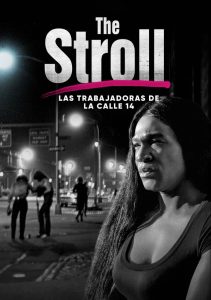
Directed by Kristen Lovell and Zackary Drucker, The Stroll is a powerful documentary that shines a light on the experiences of transgender women of color involved in sex work during the 1990s and early 2000s in Manhattan’s Meatpacking District. The film is a poignant exploration of resilience, community, and the struggles faced by these women.
From the outset, it’s clear that Lovell, a member of the community, is reclaiming her narrative. The documentary creatively intercuts scenes of Lovell in the editing room, providing a personal touch that emphasizes the authenticity of the stories being shared. The cinematography is striking, and the pacing keeps viewers engaged throughout its concise runtime, leaving them yearning for more of these vital stories.
Politically, The Stroll stands as a testament to the transformative power of storytelling. The filmmakers consciously avoid an outsider’s perspective, opting instead for an empathetic and participatory approach. By featuring women like Tabytha, Ceyenne, and Egyptt alongside Lovell, the film fosters a sense of shared experience and community.
Central to the narrative is the theme of sisterhood. Many of the women featured are either runaways or individuals who faced rejection from their families. With limited job opportunities and rampant discrimination, they turned to sex work as a means of survival. However, this choice often exposed them to significant risks, including violence and exploitation.
Despite the harsh realities, the film beautifully illustrates the love and support that flourished among these women. Older trans women acted as mentors and protectors, embodying strength in a world that frequently marginalized them. Lovell’s warmth and compassion shine through, positioning her as a guiding figure akin to the “Wonder Woman” archetype within the community.
The documentary also contextualizes these personal stories within the broader history of trans rights. Notably, it pays tribute to Sylvia Rivera, a prominent activist and key figure in the Stonewall uprising. Rivera’s legacy as a fierce advocate for trans rights, particularly for marginalized youth, is celebrated, highlighting her enduring impact on the community.
The Stroll not only honors Rivera’s contributions but also captures the essence of the community’s spirit—showing their joy, pain, and resilience. While many of the women featured faced unimaginable struggles, their strength and solidarity resonate throughout the film. Lovell and Drucker’s work serves as both a tribute to the past and an affirmation of ongoing battles for justice and equality. The film beautifully encapsulates the notion that while challenges remain, significant victories have been achieved, leaving a lasting legacy of compassion and courage.
- Youth (Spring)
212 minutes, NR, 2023
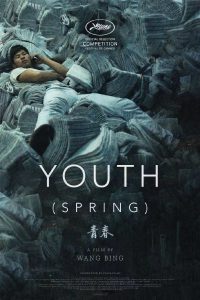
In Youth (Spring), documentarian Wang Bing offers a stark and unflinching portrayal of life within the garment industry, focusing on two workshops in Zhili City, China. Clocking in at over three hours, this film presents a more concise exploration compared to Wang’s previous works, such as the 15-hour 15 Hours, which depicted the nonstop hustle of a garment factory.
This documentary centers on the making of children’s clothing and immerses viewers in the daily lives of young workers, whose ages range from teens to early thirties, with one standout being 32-year-old Xiang Xiang, known for her impressive stitching speed. The film opens with lighthearted moments, such as a stitching competition, before transitioning into the monotonous rhythm of work and the drab environment of their dormitory, characterized by gray skies and littered streets.
As the narrative unfolds, it hints at personal stories, like that of worker Li Shengnan, who is pregnant and contemplating her future. However, Wang’s approach is not to weave these narratives into a cohesive plot. Instead, he opts for an observational style, allowing moments to accumulate and highlighting the repetitive nature of the workers’ lives. This technique immerses the audience in the workers’ experience, emphasizing the challenges they face, particularly regarding wages and labor conditions.
Wang’s camera often maintains a static position, contrasting with the emotional undercurrents of the scenes. The lack of a conventional narrative arc reflects the oppressive reality these workers endure, where even their off-hours provide little reprieve from their burdens. A notable scene features a young woman seeking solace at an unwelcoming Internet café, only to be confronted by unsolicited advice on beauty standards, further emphasizing the societal pressures they navigate.
The documentary’s minimalist style resists traditional documentary techniques, opting instead for a raw portrayal that sometimes obscures its subjects with laundry lines and other distractions. This choice mirrors the workers’ lives, where even their individuality feels diminished in the larger context of the garment industry.
Ultimately, Youth (Spring) does not conclude with a tidy resolution; rather, it leaves viewers with a haunting depiction of everyday struggles in a relentless environment. Through its immersive and sometimes disheartening lens, the film challenges viewers to confront the stark realities faced by these workers, rendering it a significant, if sobering, piece of documentary cinema.


